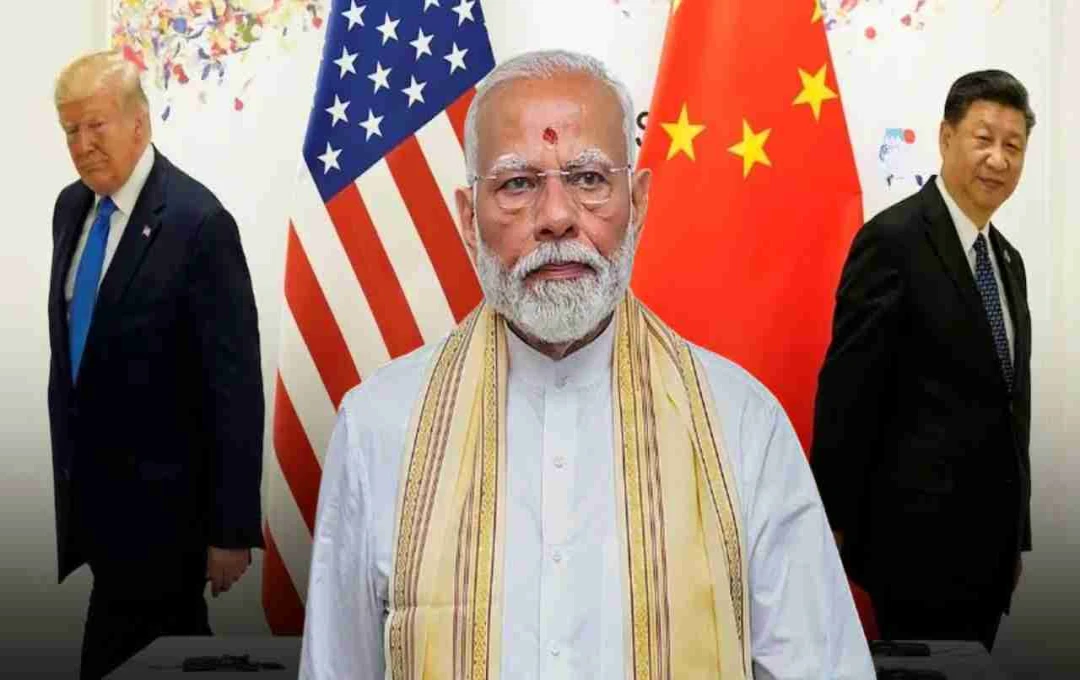CDS General Anil Chauhan has warned that the growing proximity between China, Pakistan, and Bangladesh could pose a serious threat to India's security and stability, particularly in the Indian Ocean and border regions.
China-Pak-Bangladesh Alliance: India's Chief of Defence Staff (CDS) General Anil Chauhan stated during a prominent think-tank event in the capital on Tuesday that the increasing closeness between China, Pakistan, and Bangladesh could pose a serious challenge to India's strategic stability and national security. His speech came at a time when economic and political changes in South Asia have provided an opportunity for new superpowers to expand their influence.
Changing Geopolitical Equations
According to General Chauhan, China-Pakistan defense cooperation has deepened rapidly in the past half-decade. Pakistan has fulfilled 70–80% of its military needs from Beijing during this period. Along with arms supplies, the 'commercial liabilities' of Chinese defense companies—i.e., logistical support, technical upgrades, and loans—have given this partnership a long-term dimension. Regarding Bangladesh, he said that Dhaka's economic ambitions and infrastructural development goals have led it to lean towards Chinese loans and investment, leading to a potential 'triangular alignment'.
An Example of Direct Confrontation Between Two Nuclear-Powered Nations

Chauhan mentioned the limited military clashes between India and Pakistan between May 7 and 10 after the Pahalgam terrorist attack in the Kashmir Valley (May 6)—which the army called 'Operation Sindhu'. He said, "This is probably the first time two nuclear-armed countries have faced each other on a conventional front." This event is a warning for the future that regional tensions can unexpectedly emerge even under a nuclear umbrella.
Increasing Pressure of External Interference in the Indian Ocean
The CDS specifically mentioned the Indian Ocean region (IOR), where the economic crises in Sri Lanka, Maldives, and some African coastal countries have given 'external powers'—mainly China—the opportunity to increase influence through port projects and loans. He argued that if these trends continue, India's Sea Lines of Communication and supply chains could partially go out of control.
Five Dimensions of the New Challenge

- Strategic Coordination: An 'integrated theater command' model that considers the northern (China) and western (Pakistan) borders, as well as Bangladesh in the east.
- Technological Competition: Emphasis on indigenous and friendly country technology to balance the penetration of Chinese-made networks, from 5G to cyber security.
- Narrative Warfare: Expansion of the 'Info-Guard' mechanism to prevent misinformation on social media and digital platforms.
- Economic-Diplomatic Investment: Rapid completion of infrastructure projects in Bangladesh, Nepal, Sri Lanka, and IOR countries.
- Continuous Monitoring: Advanced sensing networks in space, drones, and anti-submarine capabilities.
Bangladesh—Challenge or Opportunity?
According to analysts, the long-standing cultural and economic relations with Dhaka are also 'bridge-building' opportunities for India. Chauhan suggested that energy partnerships, water management, and skill development schemes could restore trust with Bangladesh, which could blunt the edge of a potential triangular alliance.
Next Steps of the Government
Sources in the Ministry of Defence indicate that indigenous warship construction, long-range drone programs, and the army's 'Internet of Battle Things' prototype have been put in 'mission mode'. Along with this, a proposal to increase the Indian Navy's patrolling operations by up to 25% under the 'Sagar Suraksha Initiative' is also under consideration.















